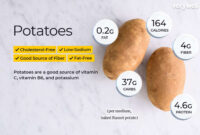When it comes to making informed decisions about our food choices, understanding nutrition facts is crucial. One common question that often arises is whether the nutrition facts displayed on food labels are per serving or per package. In this article, we will delve into this topic and provide you with a clear understanding of how to interpret nutrition facts.
Before we can answer the question of whether nutrition facts are per serving or per package, it’s important to understand serving sizes. Serving sizes are standardized amounts of food that help us compare similar products and make meaningful dietary choices. They are typically provided in familiar measurements such as cups, grams, or pieces.
Food manufacturers determine serving sizes based on various factors, including typical consumption habits and regulatory guidelines. These serving sizes may not always align with the amounts we actually consume in one sitting, which can lead to confusion.
Per Serving or Per Package?
The nutrition facts panel on food packaging displays information per serving, not per package. This means that the values listed under the Amount Per Serving section represent the nutritional content of one serving of the product.

For example, if a bag of chips has a serving size of 1 ounce and the nutrition facts show 150 calories, 10 grams of fat, and 15 grams of carbohydrates per serving, these values apply to consuming one ounce of the chips.
It’s important to note that the number of servings per package is also listed on the packaging. This information can help you calculate the total nutritional content if you consume the entire package. To do this, simply multiply the values in the nutrition facts panel by the number of servings per package.
Why Are Serving Sizes Important?
Serving sizes are essential for accurate nutritional calculations and comparisons. By standardizing serving sizes, it becomes easier to determine the nutritional value of foods and make informed decisions about portion control.
Additionally, serving sizes help us understand the distribution of macronutrients and other important nutrients in a food product. By examining the nutrition facts per serving, we can determine if a particular food aligns with our dietary goals and requirements.
Interpreting Nutrition Facts
When analyzing nutrition facts, it’s essential to consider both the values per serving and the serving size itself. This enables us to accurately calculate the nutritional content of the amount we consume and make meaningful comparisons between different products.
Keep in mind that the percentage daily values (%DV) listed on the nutrition facts panel are based on a 2,000-calorie diet. Individual calorie needs may vary, so it’s important to adjust these percentages accordingly.
In conclusion, nutrition facts are displayed per serving, not per package. Understanding serving sizes and how to interpret nutrition facts is key to making informed dietary choices. By utilizing this knowledge, you can confidently navigate the world of nutrition labels and prioritize your health and well-being.


